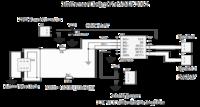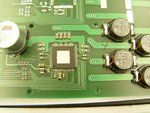Darius051
Junior Member level 1

Hello
First I'm not in electronics so much and please have this in mind if you going to give me some advice.:wink:
I have this little amp:

VMA2012 - 2x3W Class D Audio Amplifier
and I need to connect only ONE speaker to it because my project requires it. I have read some proposals here before I decided to ask for help but I'm not sure how to do it right. The speaker that I'm going to connect is this one:
**broken link removed**
and I understand that it is very risky to connect it to the outputs in such a way that both channels are involved. So the right way is to make some adjustments from the input side. So I did just connect the R and L channels together after the 10K resistors but then I had some distorted sound in the upper mid range freq. and now I would be happy if someone could explain what and where to add "something" that it sounds as expected.
Thanks :wink:
First I'm not in electronics so much and please have this in mind if you going to give me some advice.:wink:
I have this little amp:

VMA2012 - 2x3W Class D Audio Amplifier
and I need to connect only ONE speaker to it because my project requires it. I have read some proposals here before I decided to ask for help but I'm not sure how to do it right. The speaker that I'm going to connect is this one:
**broken link removed**
and I understand that it is very risky to connect it to the outputs in such a way that both channels are involved. So the right way is to make some adjustments from the input side. So I did just connect the R and L channels together after the 10K resistors but then I had some distorted sound in the upper mid range freq. and now I would be happy if someone could explain what and where to add "something" that it sounds as expected.
Thanks :wink:
Last edited by a moderator:





